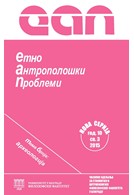L. F. Marsilji – prvi antikvar Srbije
L. F. Marsigli – The First Antiquarian of Serbia
Author(s): Vladimir V. MihajlovićSubject(s): Archaeology, Cultural history
Published by: Филозофски факултет, Универзитет у Београду
Keywords: L. F. Marsigl; history of the discipline; antiquarian; archaeology in Serbia
Summary/Abstract: The all-encompassing changes that have shaped the west of Europe during the early modern period, introducing new ways of perceiving (and investigating) the whole universe, and each individual as well, have decisively influenced the foundations of our discipline. The special credit should be paid to the antiquarian movement and the generations of its followers. On the other hand, according to the general consensus, the region of modern Serbia, being a part of the Ottoman Empire, has not attracted the curiosity of the antiquarians until the second half of the 18th century. Numerous reviews of the history of archaeology in Serbia, both by local and foreign authors, consolidate this view. However, the life and work of Luigi Ferdinando Marsigli (1658–1730) offers a significantly different view of the roots of archaeology in these parts. Born in an aristocratic family in Bologna, highly educated, serving in the Austrian Imperial army by the end of 17th century, Count Marsigli spent almost two decades in the lands of the middle Danube valley. During the Vienna war (1683–1699), and then fortifying the new frontier after the Peace of Karlovac (1699–1701), L. F. Marsigli got acquainted with the rich heritage (above all from the Roman times) of the region. He published the results of his research in the volume entitled Danubius Pannonico-Mysicus. The very title suggests the importance Marsigli assigned to the Classical past, whose vestiges he described in the second of six books of this work. Under the title De antiquitatibus Romanorum ad ripas Danubii, in accordance with the best antiquarian traditions, the learned Count offers a comprehensive and systematic review of the Roman material culture along the Danube banks – in his own words – of Pannonia and Moesia. Marsigli’s antiquarian endeavours in the field and the subsequent published accounts establish a massive contribution to the antiquarian tradition in the region of modern Serbia, and then – indirectly, through the works of the 19th century authors – to Serbian archaeology in general.
Journal: Етноантрополошки проблеми
- Issue Year: 10/2015
- Issue No: 3
- Page Range: 595-617
- Page Count: 23
- Language: Serbian

